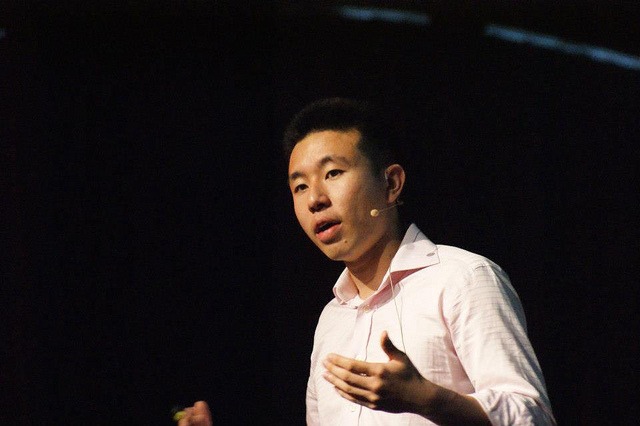In recent years, many fintech companies in Southeast Asia have been utilizing telecom data and other channels to determine users’ credit scores, clearing access to financial services and encouraging broader adoption.
According to a report on digital financial services published by Google, Temasek, and Bain & Company, digital financial services will generate about USD 38 billion in annual revenue by 2025, half of which will come from lending.
But for many people, taking out a loan is impossible, because they don’t have a recorded credit history. In particular, the report notes that more than 7 out of 10 adults in Southeast Asia are “underbanked,” meaning they have limited or no access to financial services.
Founded in 2013, TrustingSocial is on a mission to fill that gap by providing credit scoring and improving access to financial services for consumers in emerging Asian markets, such as India, Vietnam, Indonesia, and the Philippines.
KrASIA spoke with Geoffrey See, who is the head of identity at TrustingSocial, to talk about how technological advancements in the fintech sector can change the lives of millions of “financially invisible” customers across emerging markets in South and Southeast Asia.

KrASIA (Kr): How does your work in “identity” fit into the broader vision of TrustingSocial, which is to serve the unbanked population in various emerging markets?
Geoffrey See (GS): Our mission is to serve more than 1 billion customers in emerging markets such as Vietnam, Indonesia, India, and the Philippines. TrustingSocial started out with an AI-driven credit scoring model built on telco data that allows lenders to connect with 80% of the population, which is invisible to most lending institutions in these markets. These customers are invisible because they lack well-documented regular income that helps them build a credit history with a traditional credit bureau. But they are economically active and form a critical part of the emerging middle class in these places.
With the credit score, we enable instant decision-making on creditworthiness. However, customers still need to undergo various identity checks and KYC [know your customer] processes to be brought on board. This is critical. Hence, the mission of the identity division is to enable customer access to financial services in a quick, cheap and safe manner—through eKYC. We are working to enable “5 minutes, anytime, anywhere” access to financial services, which describes going from the point a customer decides to sign up for with a financial service to the point of cash disbursement.
Kr: TrustingSocial primarily uses telco data to determine a person’s creditworthiness. Can you talk about how that process works and why telco data is important in these emerging markets?
GS: Using alternative data for credit scoring and for evaluating a customer’s identity is nothing new. Some companies use in-app scoring, while others use utility bills or other behavioral characteristics to determine creditworthiness. Because our mission is financial inclusion, we need a source of data that covers a significant portion of the population, not just wealthier customers. Many of these customers might still be using feature phones, not smartphones. Hence, we focused our AI research efforts on telco data as it provides the largest coverage of our target population.
A lot of customers in markets such as Vietnam, who are new to credit, are good customers to have, but they have no credit history and this is an entry point to the financial system for them. Financial institutions, with their users’ consent, send us a phone number and we provide a previously generated credit score for that customer.

Telco data is rich and there are a lot of things you can extract to infer users’ behaviors and economic activity in an anonymized fashion. We use over 50,000 features in our artificial intelligence/machine learning models. We can’t discuss in detail the features that go into the model, but backtesting with bank’s historical data indicate a high correlation between credit scores and loan repayment performance.
Kr: What are the obstacles in the implementation of identity confirmation and eKYC solutions in these emerging markets? How has TrustingSocial localized these features?
GS: For a laborer who is paid an hourly wage, or someone living in the countryside far from their nearest bank, reaching a branch can carry a significant cost. Today, financial institutions utilize a face-to-face onboarding process, which is often branch-based and not scalable from a cost perspective. Utilizing digital channels allows banks to scale without using branches. This is an opportunity in emerging markets where the banking infrastructure is limited, but where smartphones are increasingly plentiful.
Enabling eKYC through mobile channels is critical. In India, we are ramping up to onboard over 8 million customers a month. In Vietnam, regulatory change at the end of 2019 allowed us to introduce eKYC for banks, and several companies have signed up to use our services in the first two weeks of January, with several more in the pipeline, to onboard close to 1 million customers a month.
We have to be conscious that AI models often have to be localized for different populations. For example, we train our AI models on Vietnamese faces to deploy it for the Vietnam market, and similarly do so for Indian faces in the India market. Many AI models trained on specific groups perform poorly on different populations. This invokes questions of fairness and equity, especially for neural network models, as we need to ensure that there is some transparency around why certain customers are rejected in an eKYC process, and that there are manual review processes for edge cases.
Kr: What preventive methods does TrustingSocial implement to prevent fraud?
GS: Onboarding has to be done safely, as fraudulent identities cost banks significant amounts of money. For example, in one proof of concept for a Vietnamese bank with a small data set of their customers, we found 1.6% of the customers in their test pool used fraudulent identities. Detection is critical not just for banks, but also for emerging digital money and fintech sectors.
While running our product in three markets, we have seen many innovative spoofing attacks. This mostly involves a customer using some form of mask or digital image to fake their identity and pretend to be someone else. The variations on different kinds of masks are simply amazing.
The use of facial recognition with various forms of liveness detection to see if a customer is present and checks for mask-based attacks help us tackle spoofing. However, attacks are constantly evolving, and it is essential and fortunate that we have a highly responsive and innovative AI research team that continually updates their models.
We also run a “face retrieval” product to scan over a million faces to identify cases where the same customer applies for a financial product with a different identity. This is meant to reduce one particular fraud vector. Tampered or fake identification cards are also a common problem.
Kr: Which regulations impact or define your operation?
GS: Because we work with telcos, which is a heavily regulated sector, we have to be very conscious of privacy, trust, and safety. This influences our entire product development cycle—how we build our APIs, test our models, deploy our models and servers, and run our operations.
Ensuring that data is anonymized, that we obtain customer consent, and running strict procedures for how data is accessed is mission-critical and challenging. In a new area like this, we also have to engage regulators in dialogue, as they also need to see the societal benefits from our innovations, to be willing to open up the space for experimentation with new technologies.
The interview has been edited for brevity and clarity.
